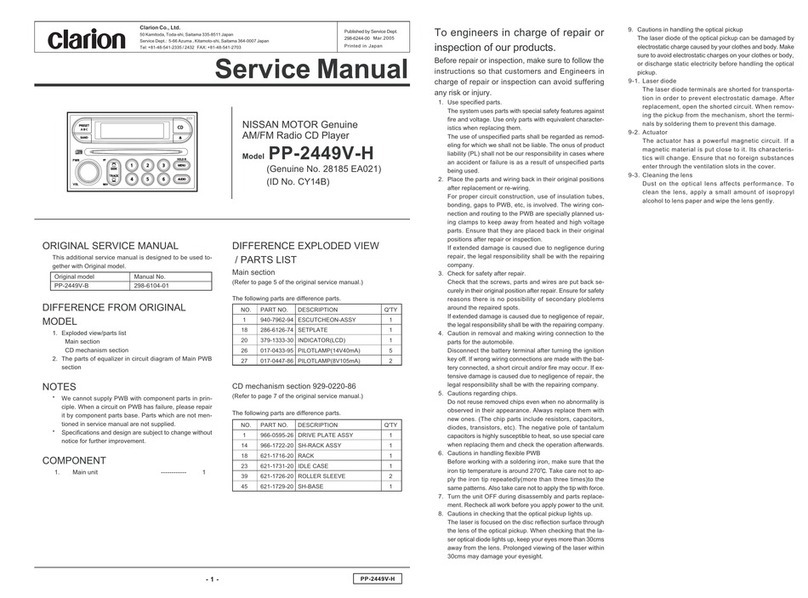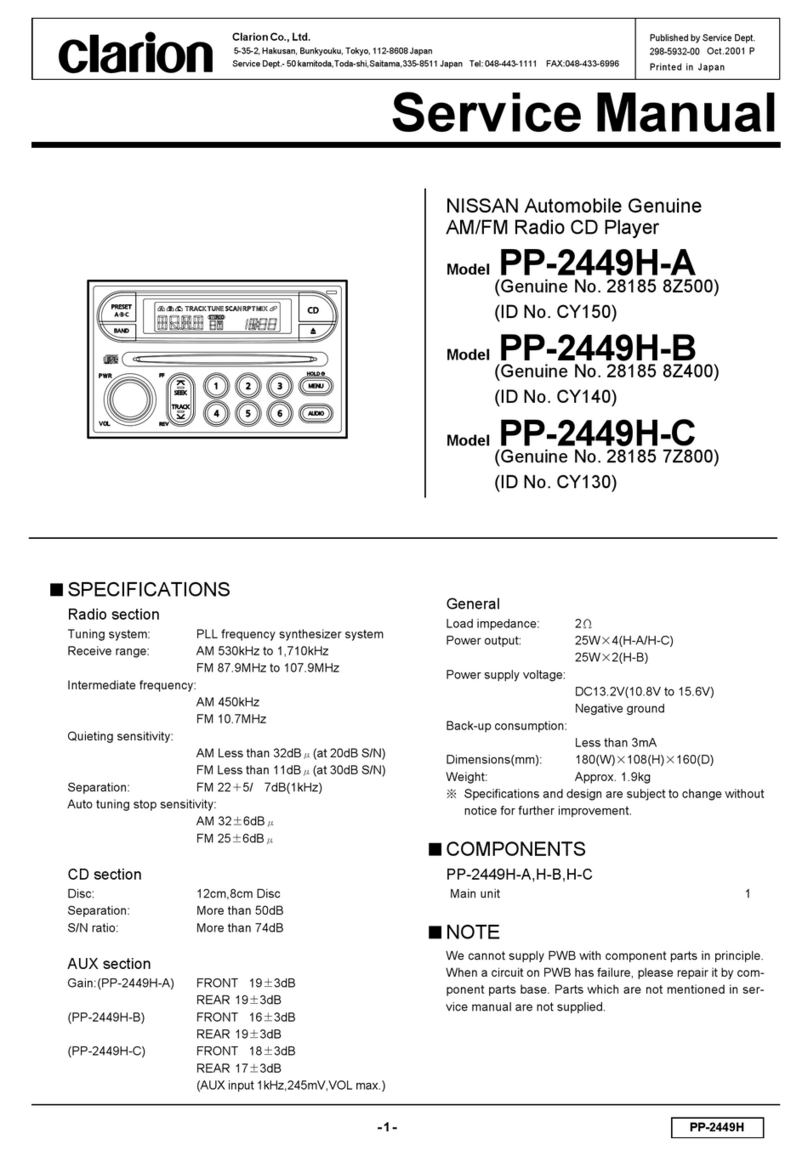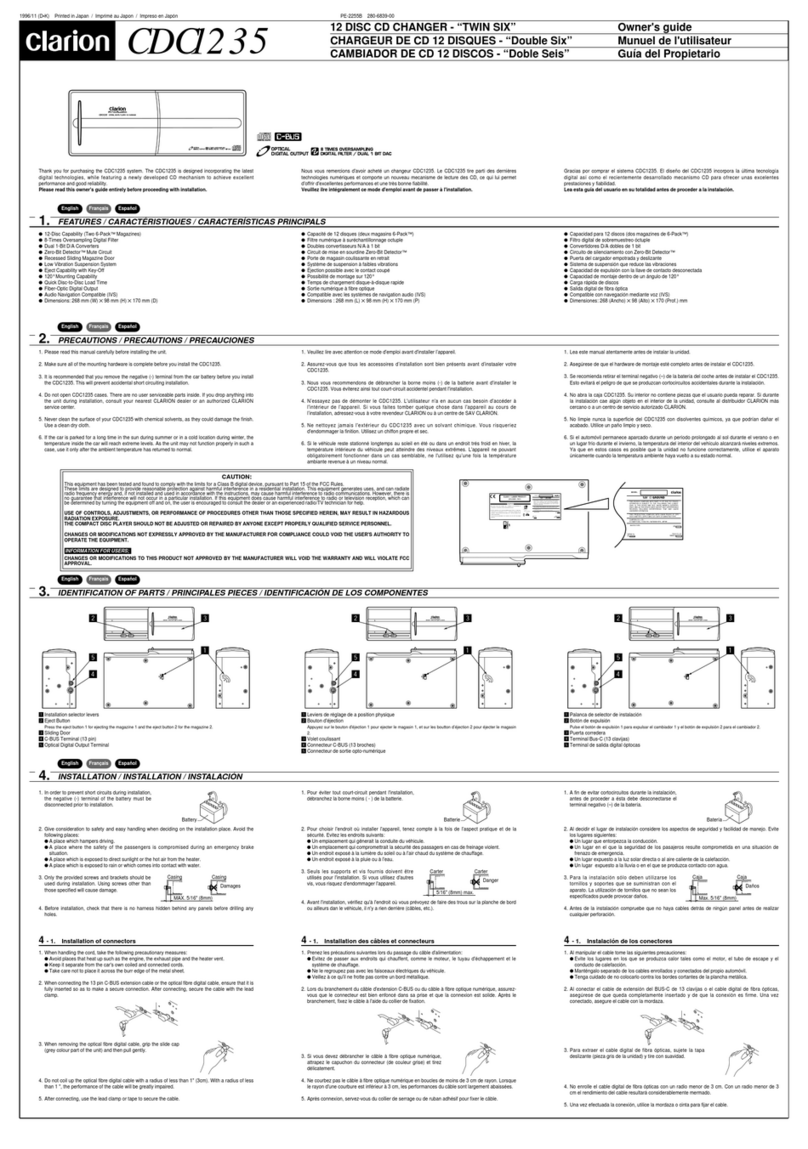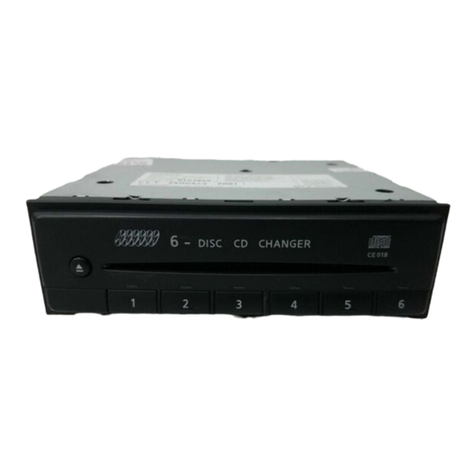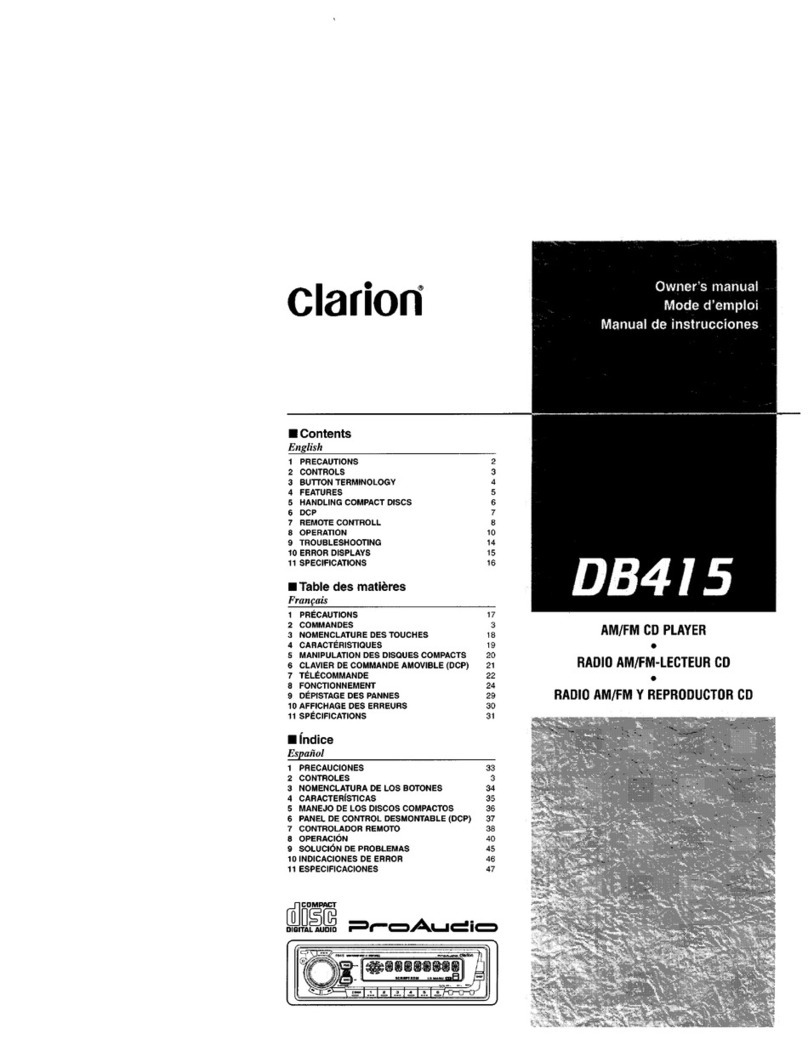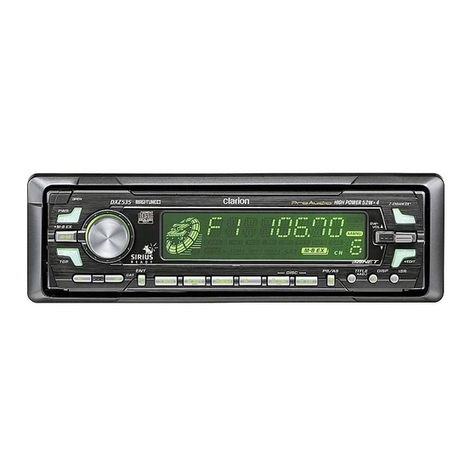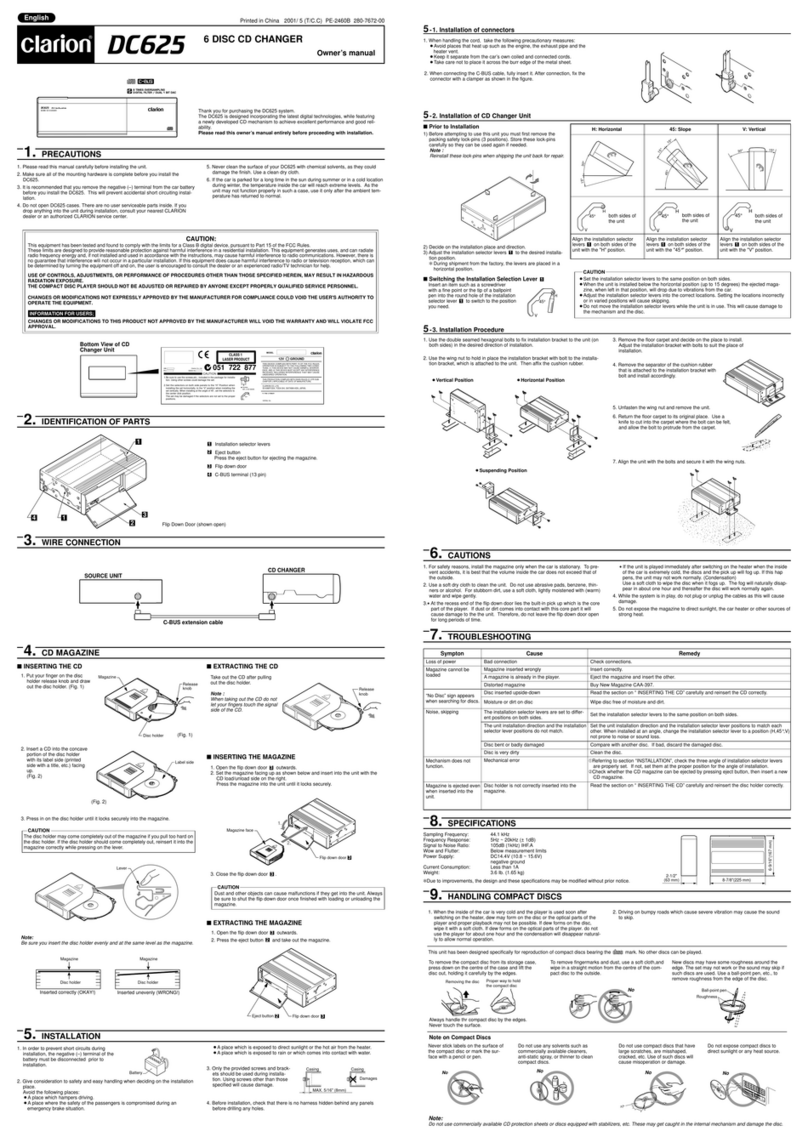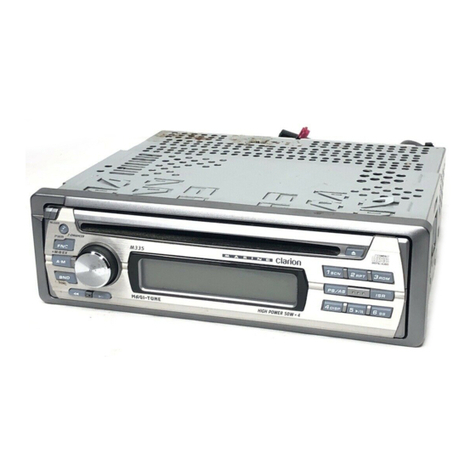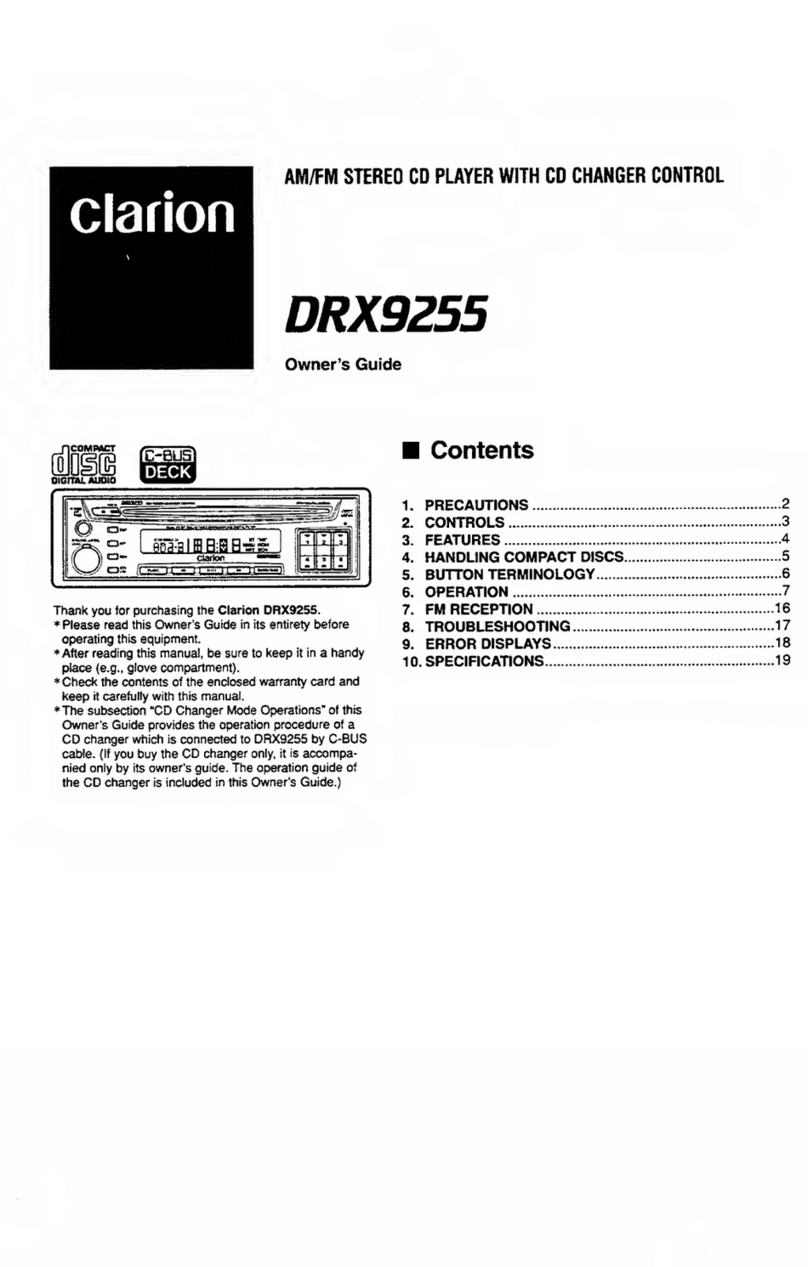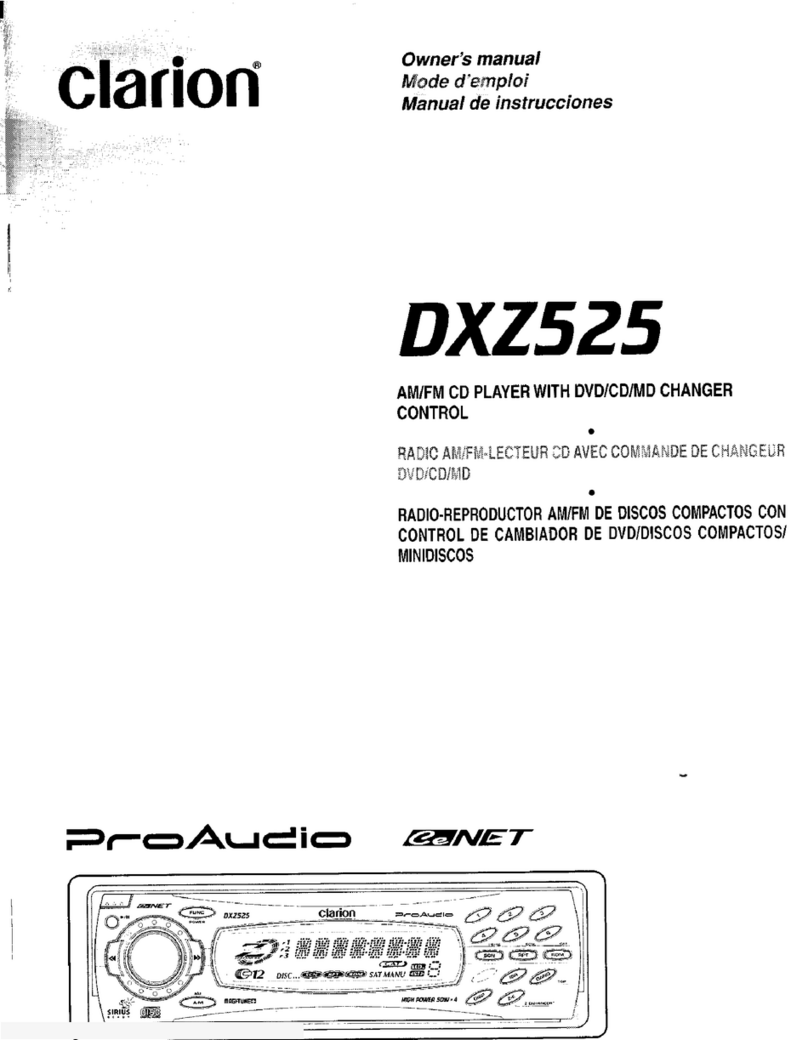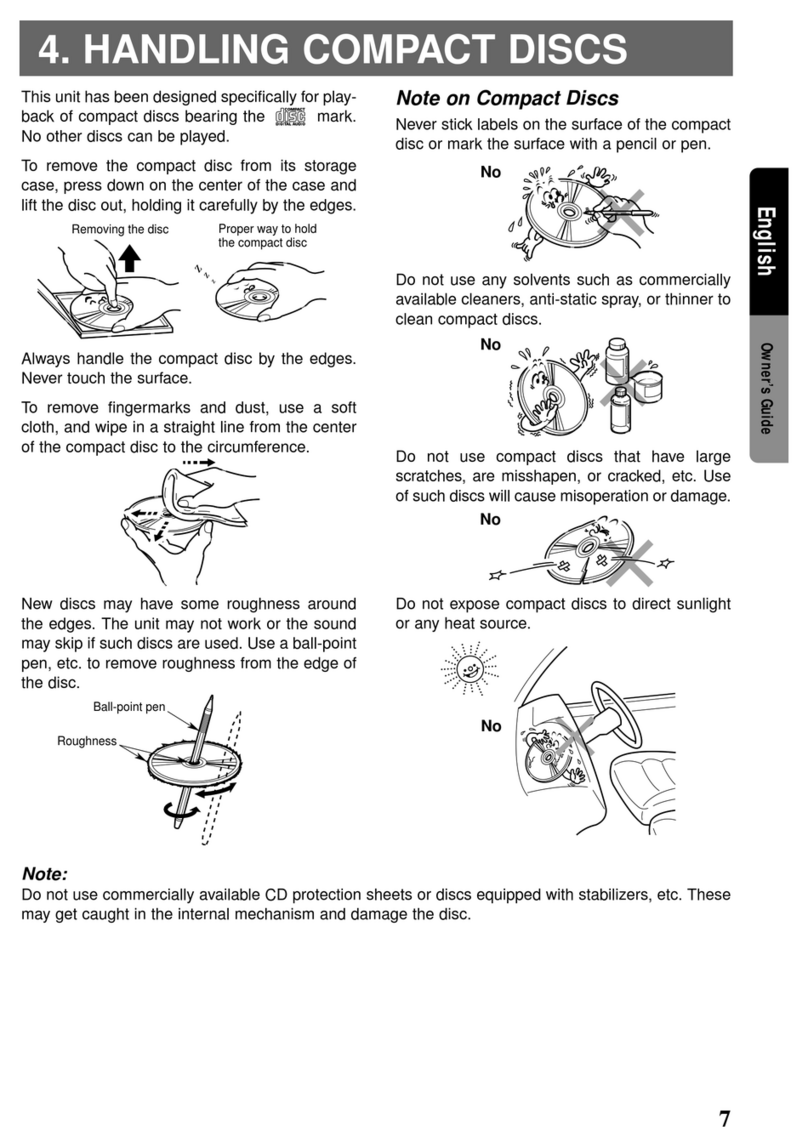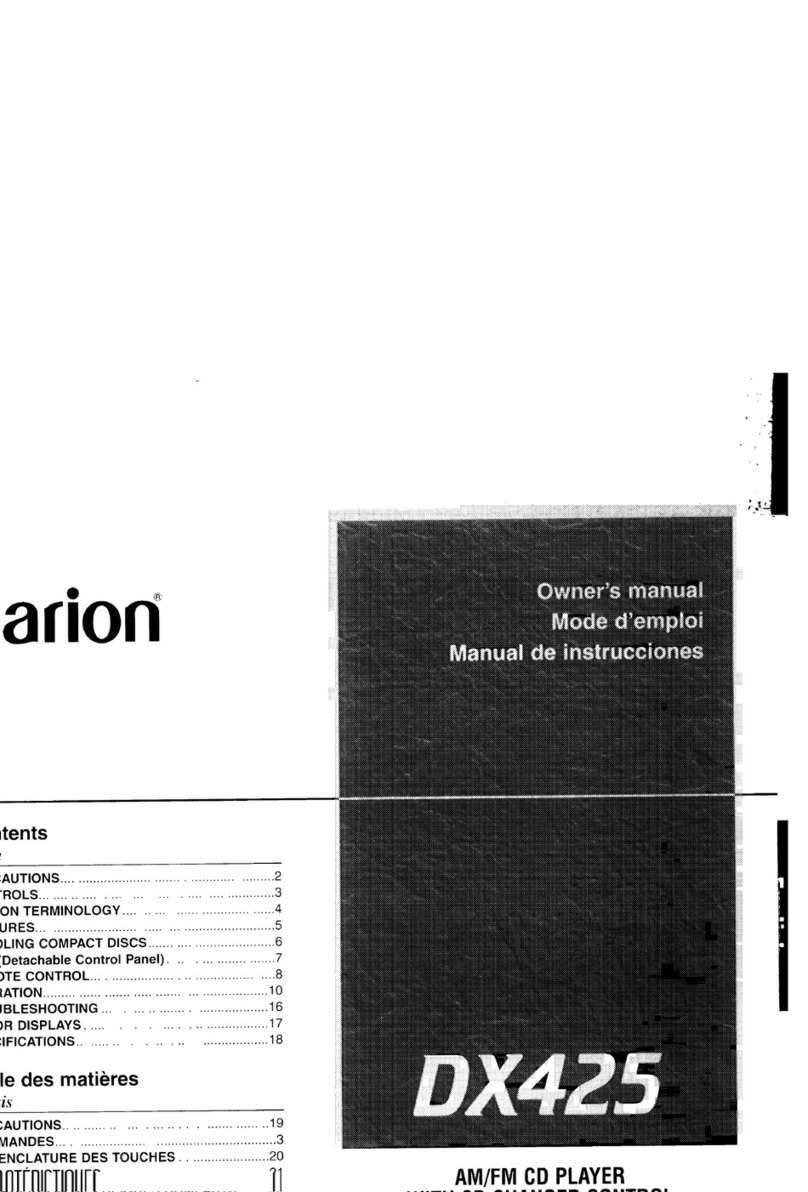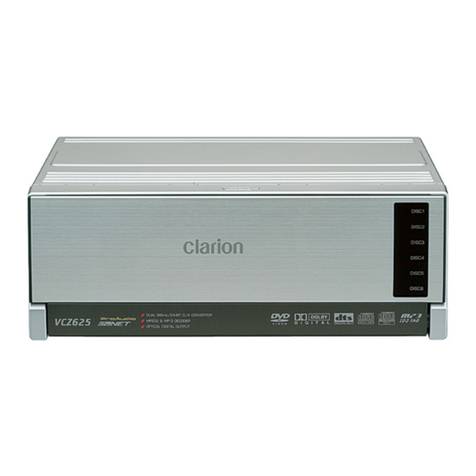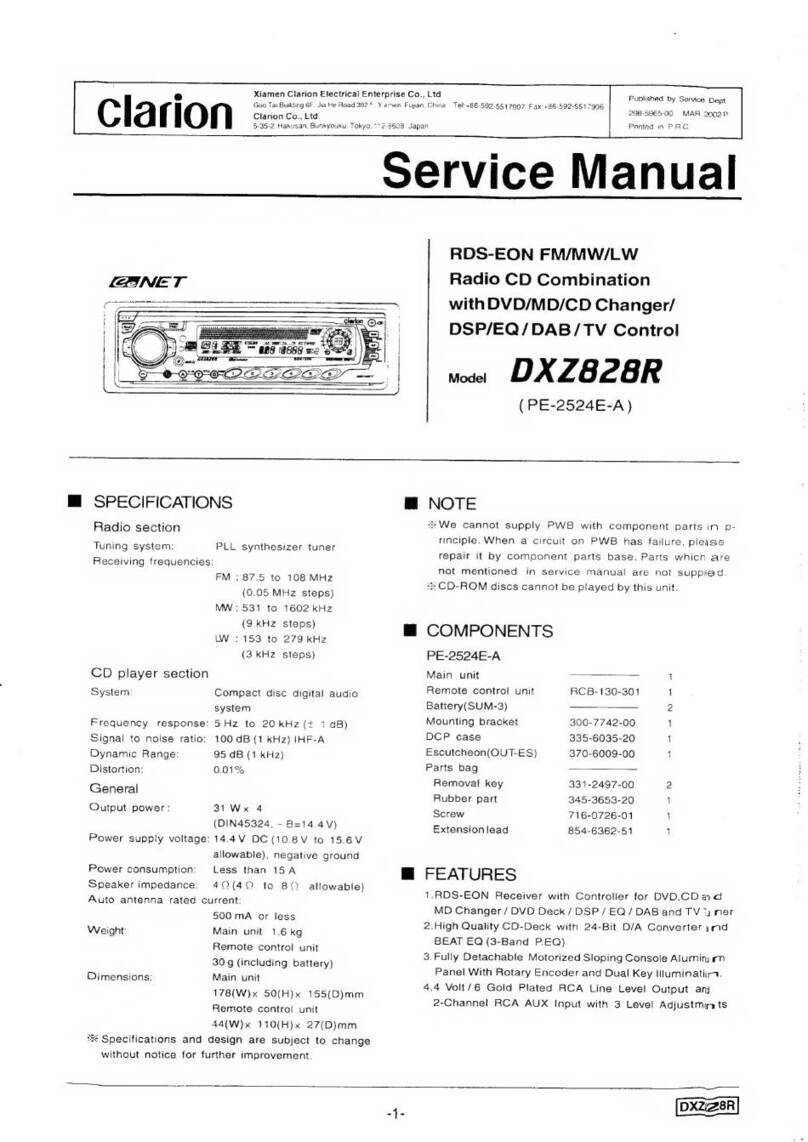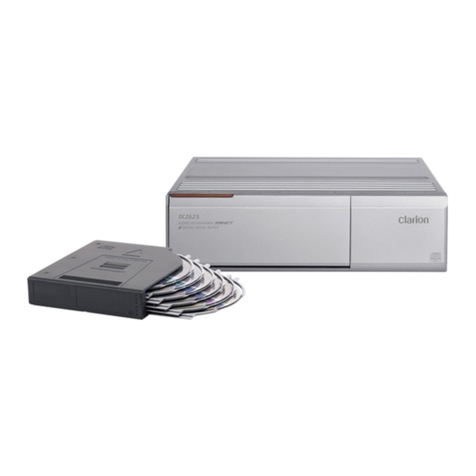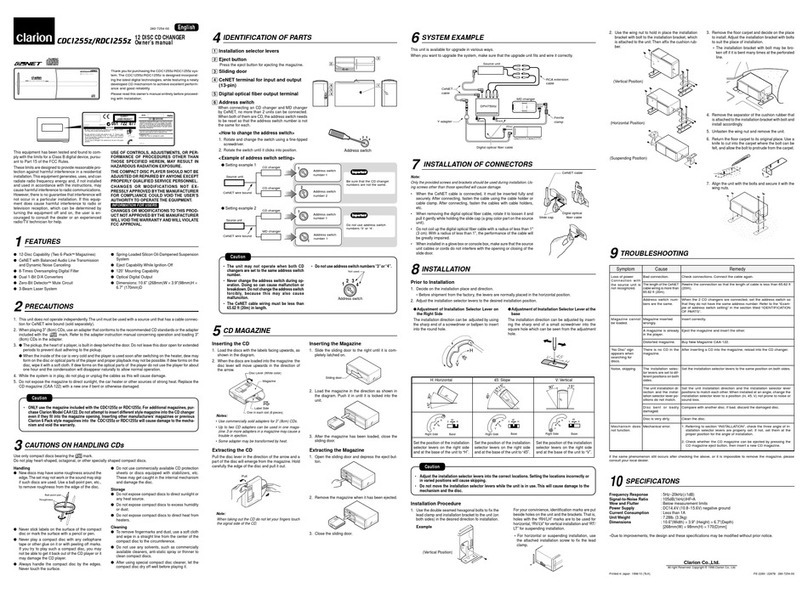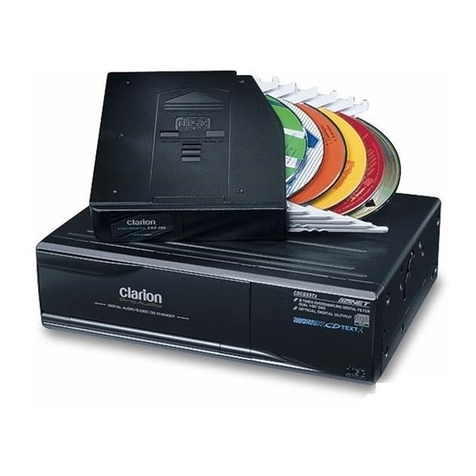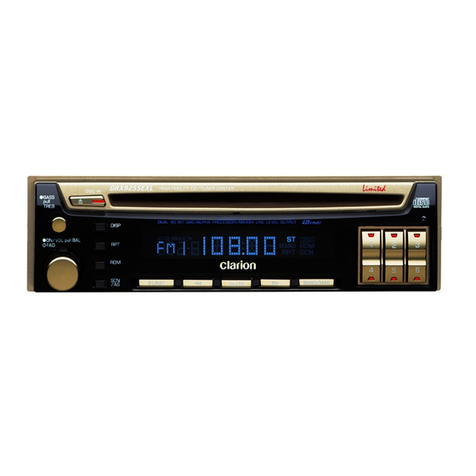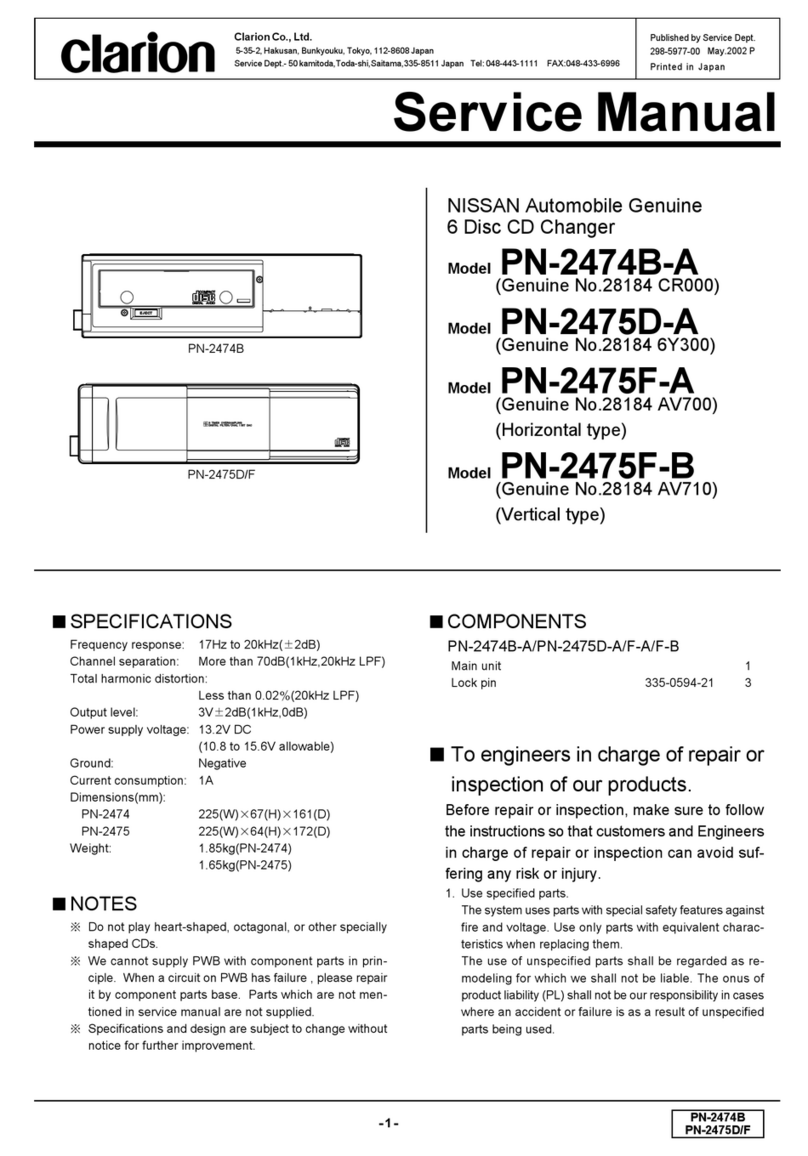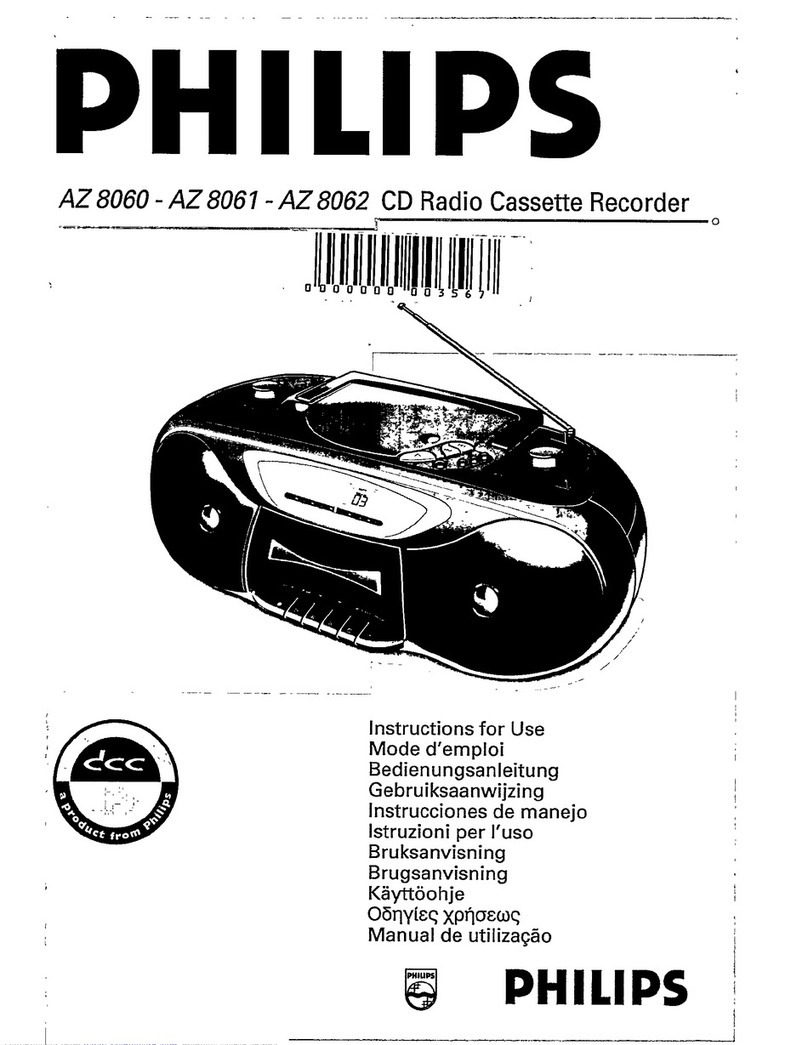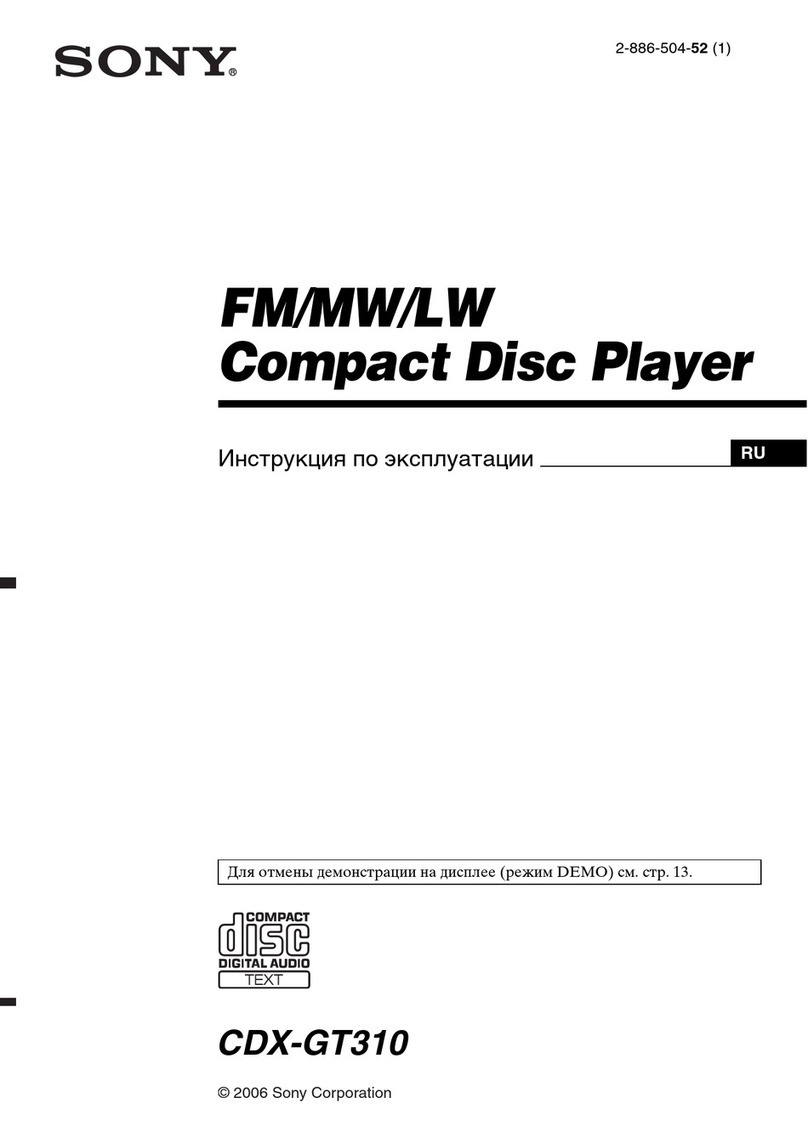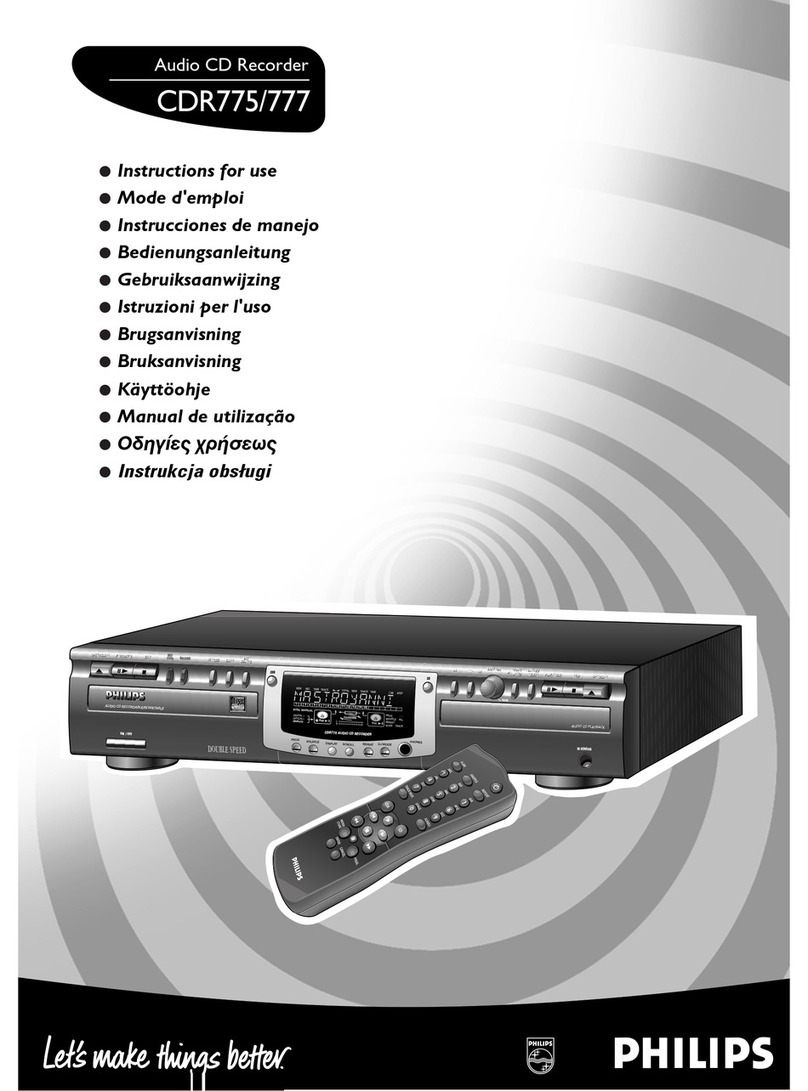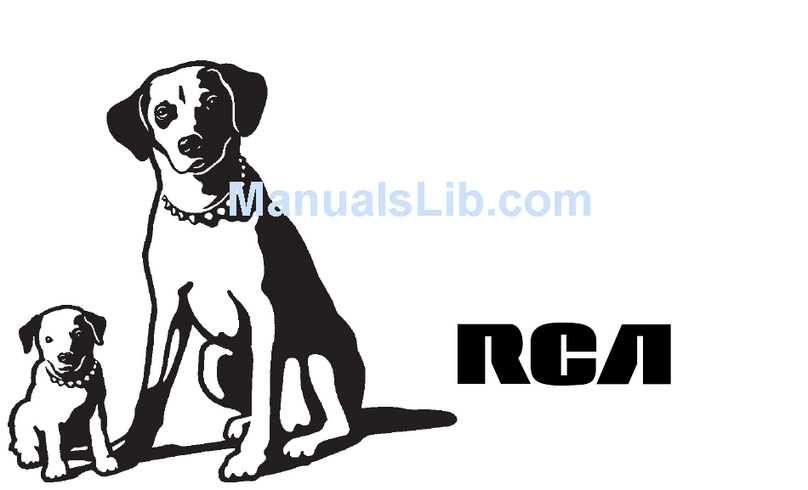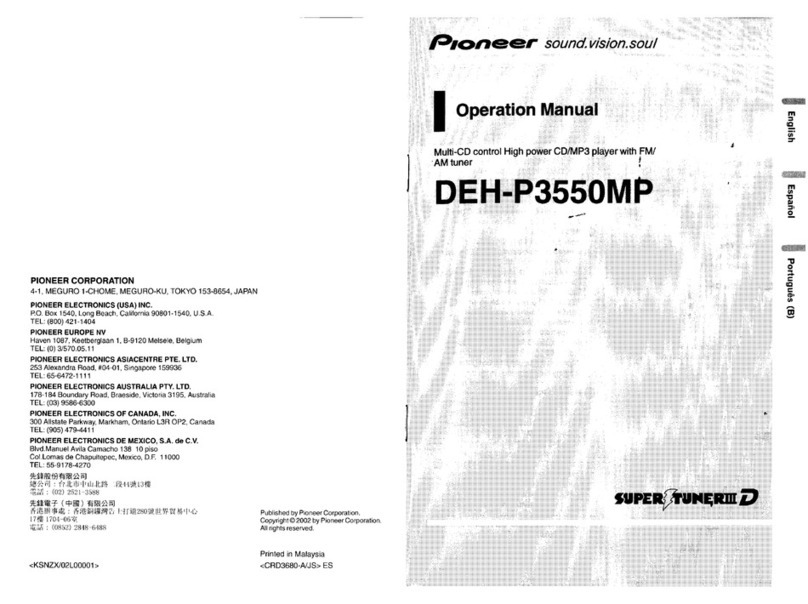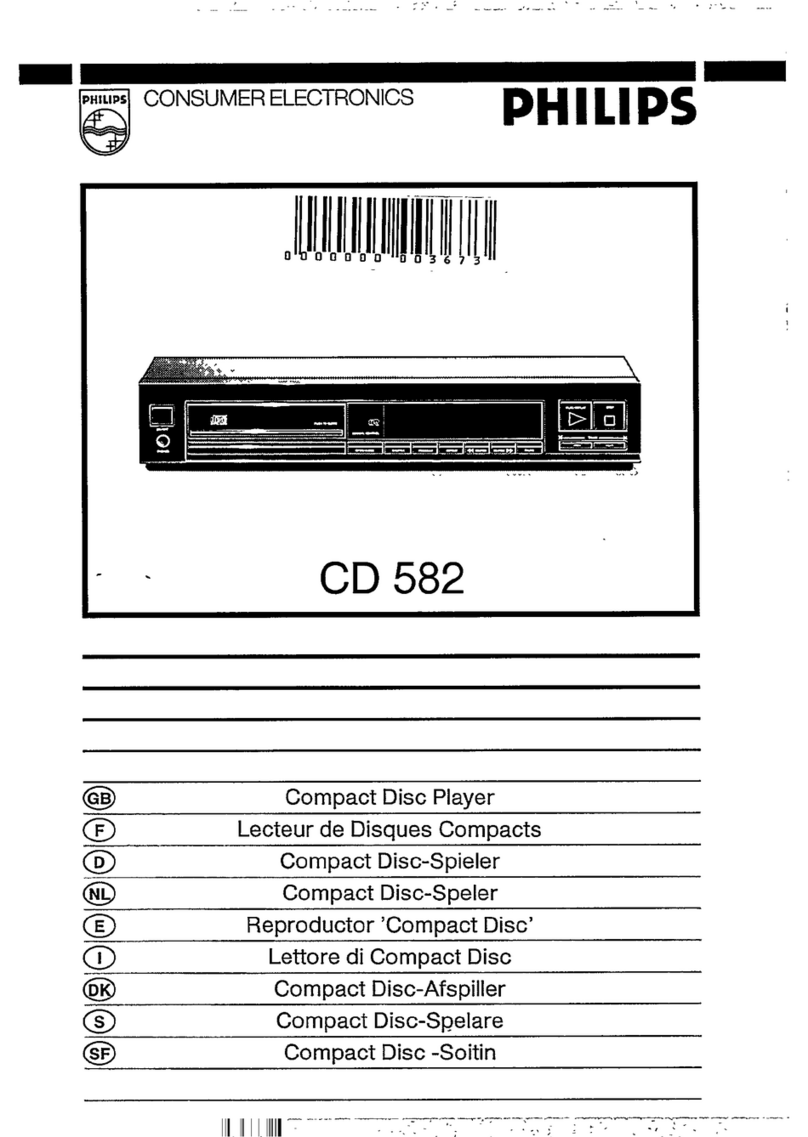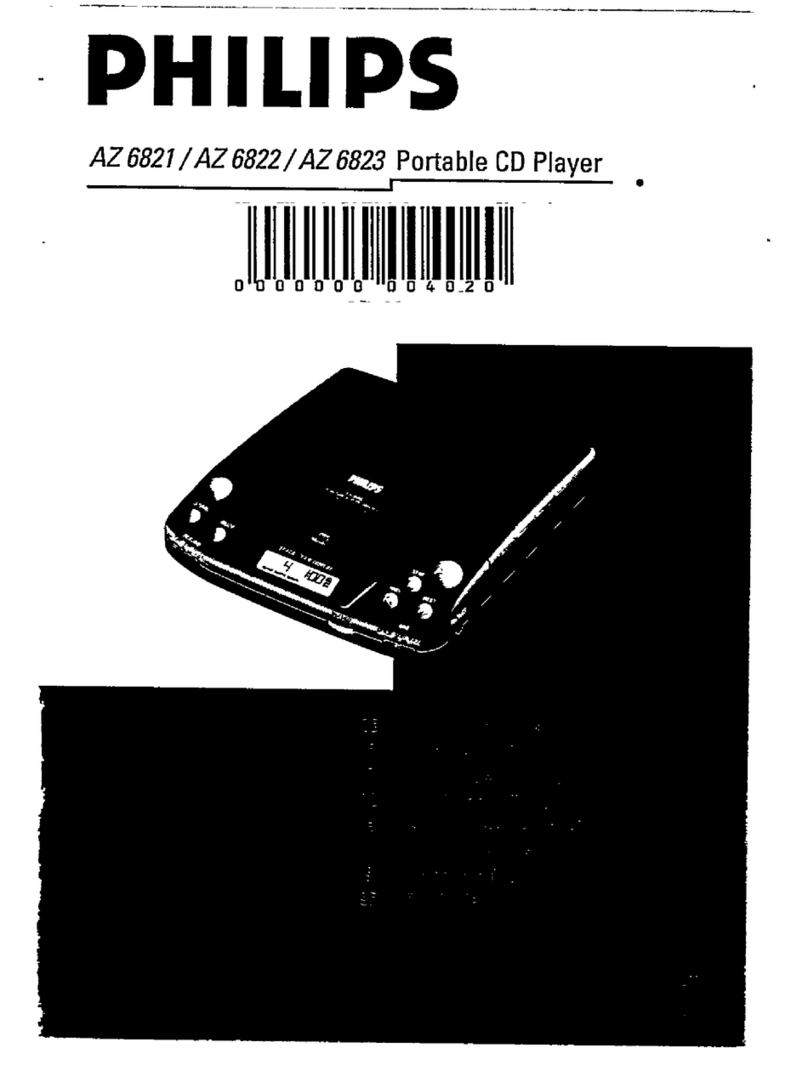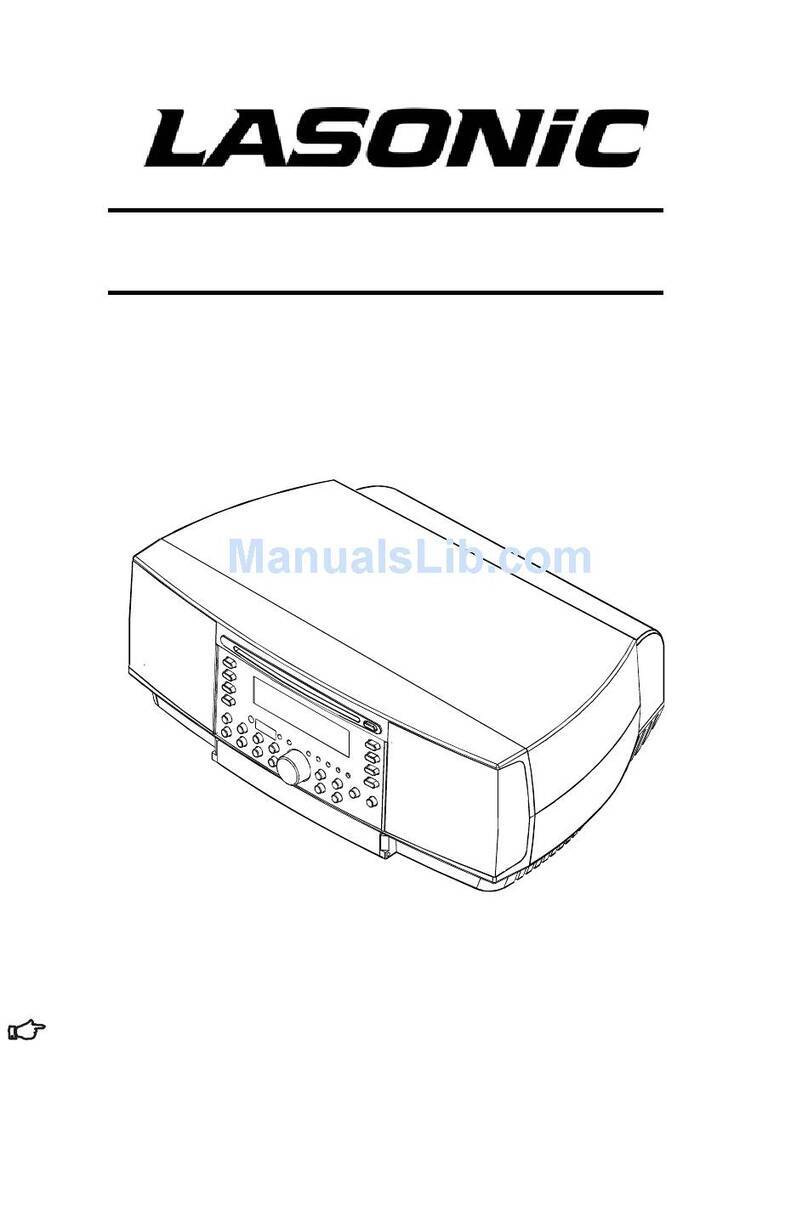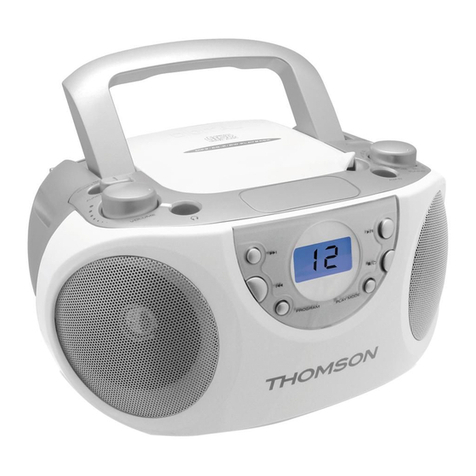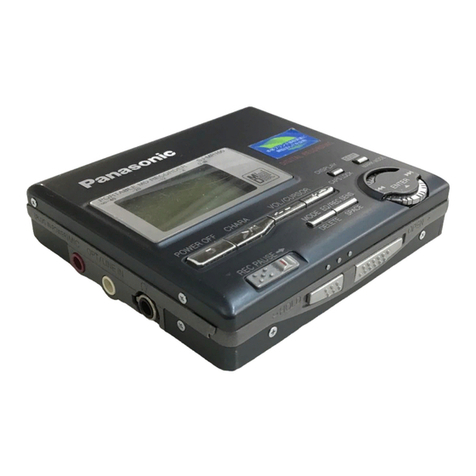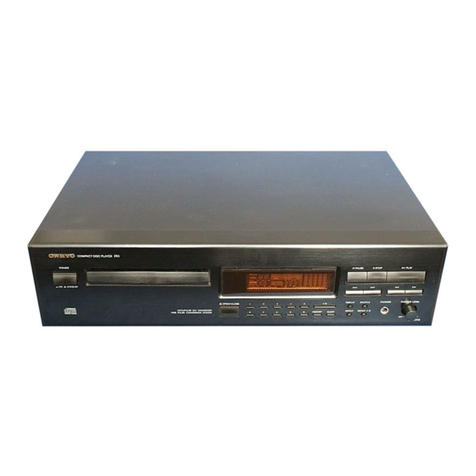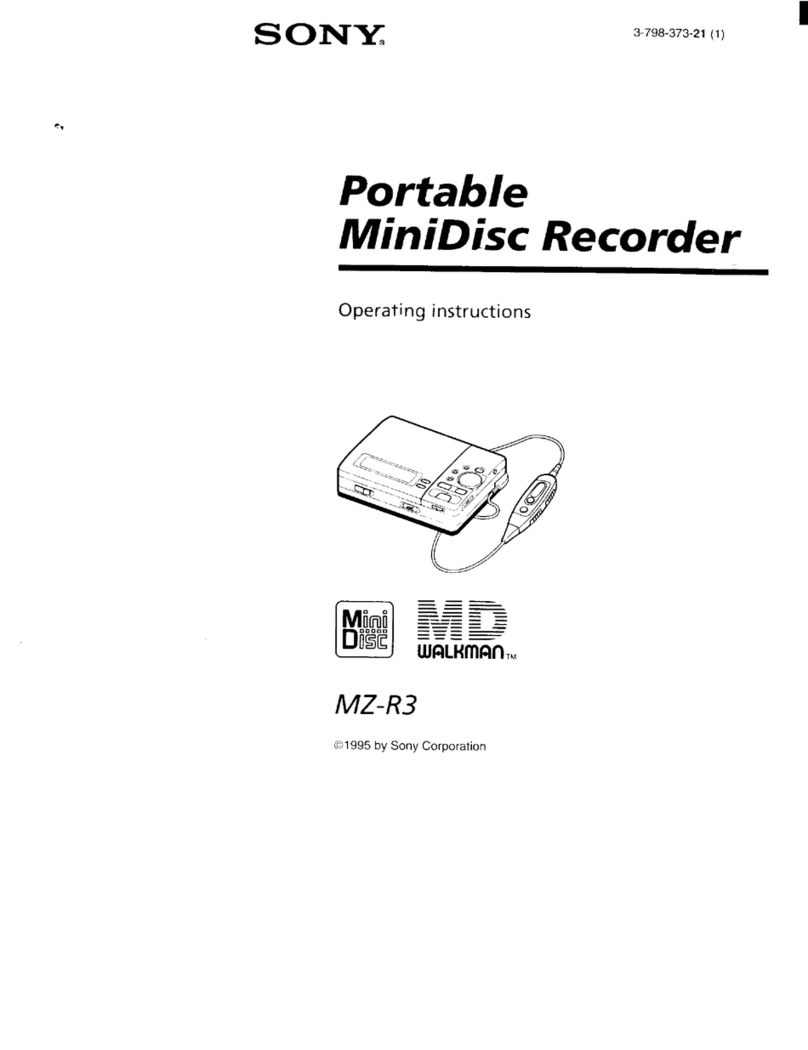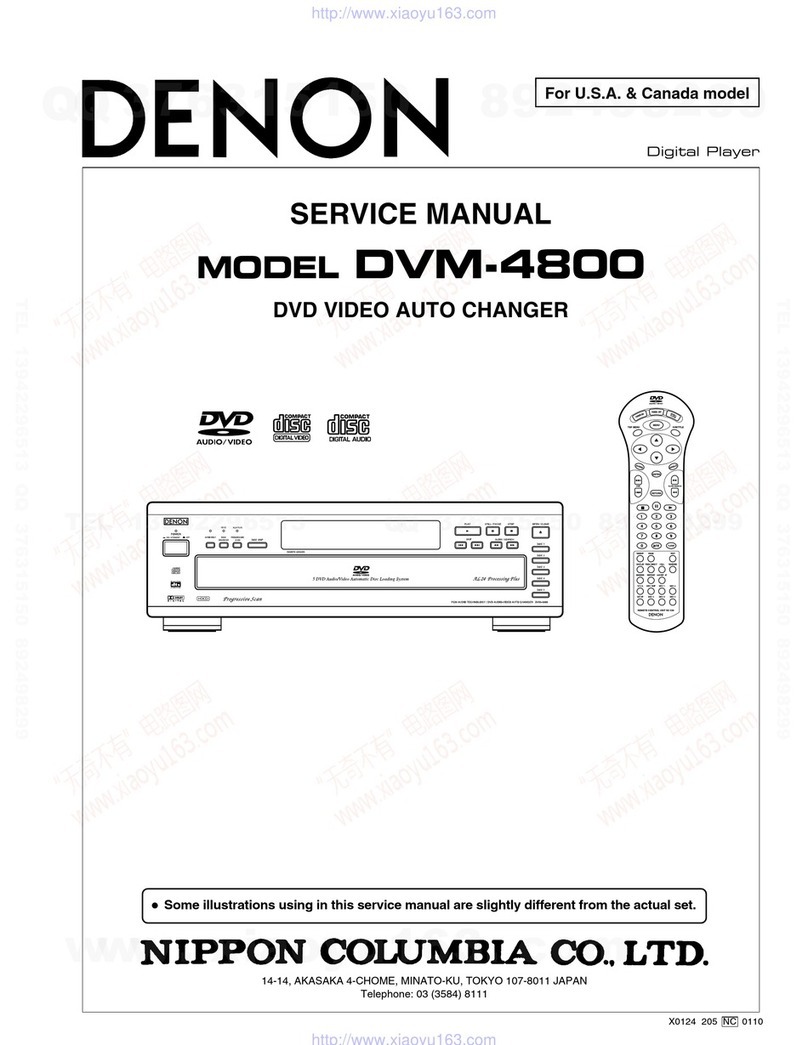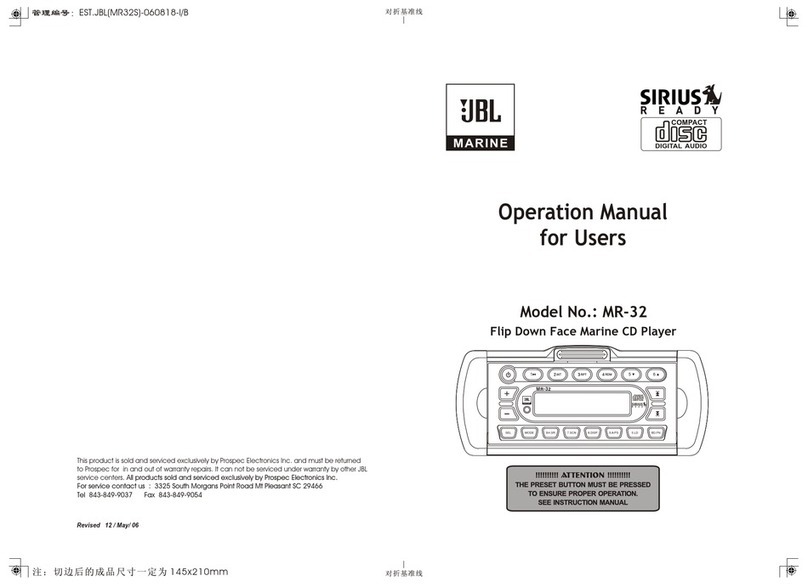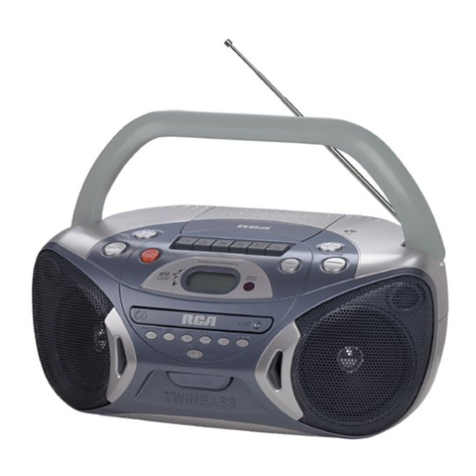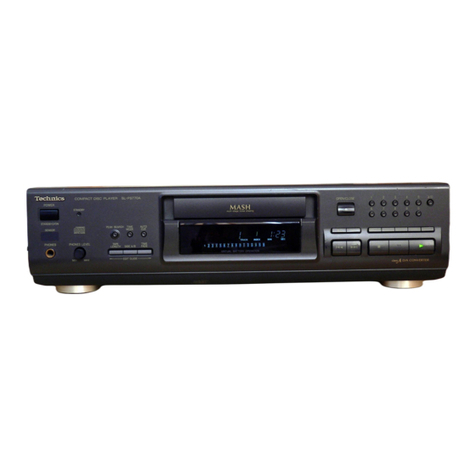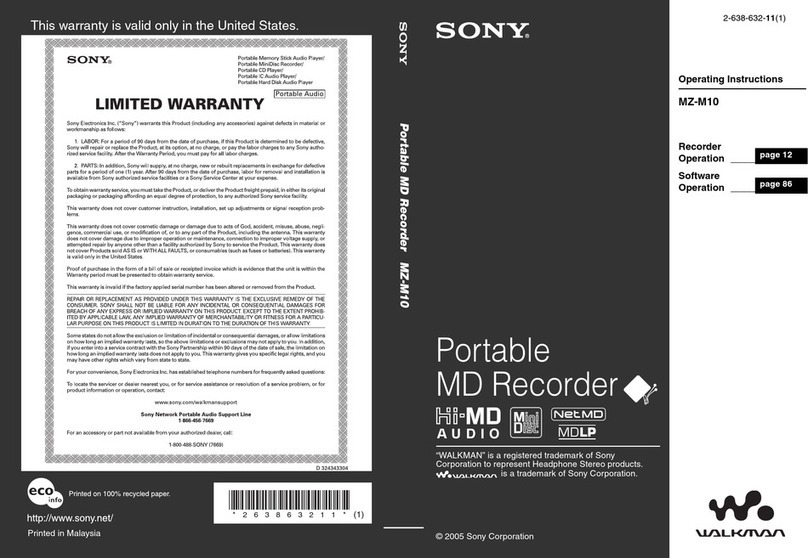
FM:-MPX/MW/LW
CD
PLAYER
WITH
VF
DECODER
Owner’s
Guide
LECTEUR
DE
CD-TUNER
FM-MPX/PO/GO
AVEC
DECODEUR
VF
CDC6300
Ce
errr
reir
err
irrrr
irri
rr
ert
tte
enn
en
sense
ence
cencenannonncneuconsensonnonans
1.
2.
3.
4.
5.
6.
.
PRECAUTIONS
DE
MANIPULATION
.
DEPISTAGE
DES
PANNES
PARWN
4
.
WICHTIGE
HINWEISE
ZUR
BETRIEBSSICHERHEIT
.
BESCHREIBUNG
DER
BEDIENUNGSELEMENTE
UND
FUNKTIONEN
.
HANDHABUNG
VON
CD-PLATTEN
.
VORSICHT
BEI
DER
HANDHABUNG
DES
GERATS
.
HILFE
BEI
DER
FEHLERSUCHE
.
ANSCHLUSS
DER
KABEL
Oohond
+
OOP
aN”
Manuel
de
Putilisateur
1.
VOORZORGSMAATREGELEN
.........cesceeeeseeeeeeseens
@
2.
NAAM
EN
FUNKTIES
VAN
DE
BEDIENINGSORGANEN
.............
@
3,
HANTEREN
KOMPAKT
DISKS
.........ccceseseeseeseseeeeeeee
33)
4,
WAARSCHUWING
BIJ
HET
HANTEREN
...........c00000
®
5,
IN
GEVAL
VAN
PROBLEMEN
...........ccscsssesesseeseners
®
G;
BEDRADING:
sec
do2scdectscatencctvecsecctuncpunsvoctarsounterstsbasts
@
Ass
PRECAUCIONES..
cc
c.secinccitvacensinsetccascveisenledacauestites
@
2.
NOMBRE
DE
CONTROLES
Y
FUNCIONES
............504
®
3.
MANEJO
DE
COMPACT
DISCS
.........cssscsssseeseseesees
)
4,
PRECAUCIONES
EN
EL
MANEWO
.........cccssssseseseenees
0
5,
SOLUCION
DE
PROBLEMAS
...........::sscsecsesesssesnesees
@
6.
CONEXIONES
DE
CABLES
...........cssesssssesesssenenterees
@
ti
FORBEREDECSER
sieseinizccnssnsrensesianinestsrineesuninicg
@
2.
NAMN
PA
KONTROLLER
OCH
FUNKTIONER
............
®
3.
NAR
DU
HANDSKAS
MED
CD-SKIVOR
.........0c0se00
rt)
4,
FORSIKTIGHETSATGARDER
.........::scsessessssseseeeerees
®
BPEL
SOW
NING
cadences
aiad
ant
ivagscnseduasavecasahradigeaplet
tes
7)
6.
KABELANSLUTNING
..........cscssssesesseesssnssssesseeeeeeees
©
DN.
PRE
CAU
GOES
sc
csconiatecs
cds set
vies
sesaenseinrac
Pussies
teens
®
2.
NOME
DOS
CONTROLES
E
FUNCOES
.........0cccen
@
3.
MANUSEIO
DO
DISCO
COMPACTO
.........ssscsseseseeees
@
4,
CUIDADO
NO
MANUSEIO
.......ccsseeeeeteeenerieeene
@
5.
ELIMINAGAO
DE
DIFICULDADES.
............sssssssseseeees
®
G.
LIGACOES
DE
FIOS:
io
cicsc
cess
tsisscattncssssiecassiattncstuns
®.
7.
INSTALLATION/INSTALLATION
........cccscsseesseereeseeseeseees
®
8.
SPECIFICATIONS/SPECIFICATIONS
.......cecessseeseeeeeenee
©
9,
FEATURES/CARACTERISTIQUES
..............
weno
cgoueseonsuccaat
@
